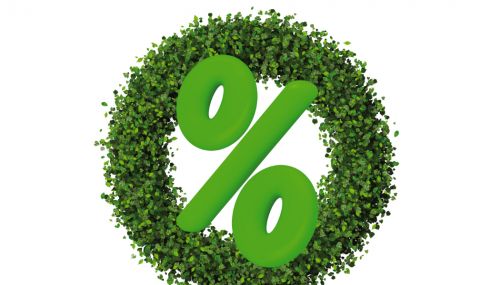All
EIA Projects Flat Energy Consumption With Changing Mix

The U.S. Energy Information Administration (EIA) recently offered its views of the energy marketplace between now and 2040 in its 2017 Annual Energy Outlook.
The outlook offers multiple scenarios based on different variables. The central set of projections is known as the “Reference case,” which assumes trend improvement in known technologies, along with a view of economic and demographic trends reflecting the current central views of leading economic forecasters and demographers. It also generally assumes that current laws and regulations affecting the energy sector, including sunset dates for laws that have them, are unchanged throughout the projection period.
In addition to the reference case, there several “side cases,” as follows.
- In the High Oil Price case, the price of Brent crude in 2016 dollars reaches $226 per barrel (b) by 2040, compared to $109/b in the Reference case and $43/b in the Low Oil Price case.
- In the High Oil and Gas Resource and Technology case, lower costs and higher resource availability than in the Reference case allow for higher production at lower prices.
- In the Low Oil and Gas Resource and Technology case, more pessimistic assumptions about resources and costs are applied.
- The effects of economic assumptions on energy consumption are addressed in the High and Low Economic Growth cases, which assume compound annual growth rates for U.S. gross domestic product of 2.6 percent and 1.6 percent, respectively, from 2016–40, compared with 2.2 percent annual growth in the Reference case.
- A case assuming that the Clean Power Plan (CPP) is not implemented can be compared with the Reference case to show how the absence of that policy could affect energy markets and emissions.
The following are some of the key findings from the Annual Energy Outlook.
Domestic energy consumption remains relatively flat, but the fuel mix changes significantly.
- Overall U.S. energy consumption remains relatively flat in the Reference case, rising 5 percent from the 2016 level by 2040 and somewhat close to its previous peak. Varying assumptions about economic growth rates or energy prices considered in the cases affect projected consumption.
- Natural gas use increases more than other fuel sources in terms of quantity of energy consumed, led by demand from the industrial and electric power sectors.
- Petroleum consumption remains relatively flat as increases in energy efficiency offset growth in the transportation and industrial activity measures.
- Coal consumption decreases as coal loses market share to natural gas and renewable generation in the electric power sector.
- On a percentage basis, renewable energy grows the fastest because capital costs fall with increased penetration and because current state and federal policies encourage its use.
- Liquid biofuels growth is constrained by relatively flat transportation energy use and blending limitations.
Energy production is expected to increase by 20 percent.
- Total energy production increases by more than 20 percent from 2016 through 2040 in the Reference case, led by increases in renewables, natural gas, and crude oil production. Production growth is dependent on technology, resources, and market conditions.
U.S. energy production continues to increase led by growth in natural gas and renewables.
- Natural gas production accounts for nearly 40 percent of U.S. energy production by 2040 in the Reference case. Varying assumptions about resources, technology, and prices in alternative cases significantly affect the projection for U.S. production.
- Crude oil production in the Reference case increases from current levels, then levels off around 2025 as tight oil development moves into less productive areas. Like natural gas, projected crude oil production varies considerably with assumptions about resources and technology.
- Non-hydroelectric renewable energy production grows, reflecting cost reductions and existing policies at the federal and state level that promote the use of wind and solar energy.
- Nuclear generation declines modestly over 2017–40 in the Reference case as new builds already being developed and plant uprates nearly offset retirements. The decline in nuclear generation accelerates beyond 2040 as a significant share of existing plants is assumed to be retired at age 60.
Oil prices rise from current levels, while natural gas prices remain relatively low.
- In real terms, crude oil prices in 2016 (based on the global benchmark North Sea Brent) were at their lowest levels since 2004, and natural gas prices (based on the domestic benchmark Henry Hub) were the lowest since prior to 1990. Both prices are projected to increase over the projection period.
- Crude oil prices in the Reference case are projected to rise at a faster rate in the near term than in the long term. However, price paths vary significantly across the side cases that differ in assumptions about U.S. resources and technology and global market conditions.
- Natural gas prices in the Reference case also rise and then remain relatively flat at about $5 per million British thermal units (MMBtu) over 2030–40, then rise again over the following decade. Projected U.S. natural gas prices are highly sensitive to assumptions about domestic resources and technology explored in the side cases.
The United States becomes a net energy exporter.
- The United States is projected to become a net energy exporter by 2026 in the Reference case projections, but the transition occurs earlier in three of the side cases.
- Net exports are highest in the High Oil and Gas Resource and Technology case, as favorable geology and technological developments combine to produce oil and natural gas at lower prices.
- The High Oil Price case includes favorable economic conditions for producers, but consumption is lower in response to higher prices. Without substantial improvements in technology and more favorable resource availability, U.S. energy production declines in the 2030s.
- In the Low Oil Price and Low Oil and Gas Resource and Technology cases, the United States remains a net importer over the analysis period.
- In the Low Oil and Gas Resource and Technology case, the conditions are unfavorable for U.S. crude oil production at levels that support exports.
- In the Low Oil Price case, prices are too low to provide a strong incentive for high U.S. production.
The United States becomes a net energy exporter, as natural gas exports increase and net petroleum imports decrease.
- The United States has been a net energy importer since 1953, but declining energy imports and growing energy exports make the United States a net energy exporter by 2026 in the Reference case projection.
- Crude oil and petroleum products dominate U.S. energy trade. The United States is both an importer and exporter of petroleum liquids, importing mostly crude oil and exporting mostly petroleum products such as gasoline and diesel throughout the Reference case projection.
- Natural gas trade, which has historically been mostly shipments by pipeline from Canada and to Mexico, is projected to be increasingly dominated by liquefied natural gas exports to more distant destinations.
- The United States continues to be a net exporter of coal (including coal coke), but its exports growth is not expected to increase significantly because of competition from other global suppliers closer to major markets.
U.S. crude oil and natural gas production depends on oil prices, as well as resource availability and technological improvements.
- Projections of tight oil and shale gas production are uncertain, because large portions of the known formations have relatively little or no production history, and extraction technologies and practices continue to evolve rapidly. Continued high rates of drilling technology improvement could increase well productivity and reduce drilling, completion, and production costs.
- In the High Oil and Gas Resource and Technology case, both crude oil and natural gas production continue to grow.
- Crude oil prices affect natural gas production primarily through changes in global natural gas consumption/exports, as well as increases in natural gas production from oil formations (associated gas).
- In the High Oil Price case, the difference between the crude oil and natural gas prices creates more incentive to consume natural gas in energy-intensive industries and for transportation, and to export it overseas as liquefied natural gas, all of which drive U.S. production upward. Without the more favorable resources and technological developments found in the High Oil and Gas Resource and Technology case, U.S. crude oil production begins to decline in the High Oil Price case, and by 2040, production is nearly the same as in the Reference case.
U.S. petroleum product consumption remains below 2005 levels through 2040, while crude oil production rebounds from recent declines.
- In all cases, U.S. petroleum consumption is projected to remain below the 2005 level, the highest recorded to date, through 2040.
- Low oil prices result in increased domestic consumption in the Low Oil Price case. Simultaneously, low prices drive down domestic production, resulting in generally higher import levels.
- The domestic wellhead price does not change significantly in the economic growth cases, resulting in consumption that is similar to the Reference case level.
- Reference case U.S. crude oil production is projected to recover from recent declines, as upstream producers increase output because of the combined effects of the rise in prices from recent lows and cost reductions.
- In the Reference case, higher refinery inputs in the near term absorb higher forecast levels of U.S. crude oil production, limiting changes to imports. Eventually, net crude oil imports increase because domestic crude production does not keep pace with refinery inputs as domestic refiners expand product exports.
Tight oil dominates U.S. production, but other types of oil production continue to yield significant volumes.
- Despite rising prices, Reference case U.S. crude oil production levels off between 10 and 11 million barrels per day as tight oil development moves into less productive areas and as well productivity gradually decreases.
- Lower 48 onshore tight oil development continues to be the main driver of total U.S. crude oil production, accounting for about 60 percent of the total cumulative domestic production in the Reference case domestic between 2016 and 2040.
- Announced discoveries in deepwater Gulf of Mexico lead to production increases in the Lower 48 states offshore through 2020. Reference case offshore production then declines until 2034, with the rate of decline slowing through 2040 as production from new discoveries offset declines in legacy fields.
- In the High Oil and Gas Resource and Technology case, higher well productivity reduces development and production costs per unit, resulting in more resource development than in the Reference case.
The Southwest and Dakotas/Rocky Mountains regions lead growth in tight oil production.
- Growth in Lower 48 onshore crude oil production is projected to occur mainly in the Southwest, Dakotas/Rocky Mountains, and Gulf Coast regions.
- Growth in crude oil production in the Southwest is supported by increases in the Permian basin, which includes both tight and non-tight formations.
- Growth in Dakotas/Rocky Mountains crude oil production is driven by increased production from the Bakken play, which is exclusively tight oil.
- Production in the Gulf Coast region, primarily from the Eagle Ford and Austin Chalk plays, increases throughout most of the projection period.
The United States remains a net petroleum importer.
- In the Reference case, net crude oil and petroleum product imports as a percentage of U.S. product supplied fall through 2030.
- The Low Oil Price case results in lower U.S. crude oil production because of the lack of economic incentive for producers to drill in higher-cost tight oil formations and offshore crude oil reserves. Relatively lower prices in this case result in higher domestic product demand that promotes higher crude oil and petroleum product imports.
- In the High Oil Price case, high crude oil prices lead to increased U.S. crude oil production from higher cost production areas and result in lower domestic petroleum product demand, which leads to lower product imports.
- In the High Oil and Gas Resource and Technology case, U.S. crude oil and petroleum liquids exports are higher compared with the Reference case.
U.S. motor gasoline consumption and exports are sensitive to changes in prices.
- U.S. average retail prices for motor gasoline are driven largely by changes in crude oil prices, because crude oil is the main input used to produce motor gasoline.
- Improvements in vehicle fuel efficiency contribute to falling U.S. motor gasoline consumption, while high levels of refinery output result in continued growth of motor gasoline exports through 2040.
- In the Low Oil Price case, greater domestic motor gasoline consumption and lower domestic crude oil production result in lower exports of motor gasoline.
- The High Oil Price case results in lower domestic motor gasoline consumption and greater exports, reflecting the domestic gasoline demand response to higher prices as well as the U.S. refining industry’s competitive advantage.
U.S. natural gas consumption increases and, in combination with growing net exports, supports production growth.
- In the Reference case, natural gas production over the 2016–20 period is projected to grow at about the same rapid rate (nearly 4 percent annual average) as it has since 2005. Since 2005, technologies to more efficiently produce natural gas from shale and tight formations have driven prices down, spurring growth in consumption and net exports.
- Beyond 2020, natural gas production in the Reference case is projected to grow at a lower rate (1.0 percent annual average) as net export growth moderates, domestic natural gas use becomes more efficient, and prices slowly rise.
- Near-term production growth is supported by large, capital-intensive projects, such as new liquefaction export terminals and petrochemical plants, built in response to low natural gas prices.
- Despite decreasing in the near term, in all cases, other than the Low Oil and Gas Resource and Technology case, U.S. natural gas consumption is expected to increase during much of the projection period.
Natural gas prices increase and are sensitive to the availability of new technology and resources.
- The range of projected Henry Hub natural gas prices depends on the assumptions about the availability of oil and natural gas resources and drilling technology. In the Reference case, the natural gas spot prices at the U.S. benchmark Henry Hub in Louisiana rise because of increased drilling levels, production expansion into less prolific and more expensive-to produce areas, and demand from both petrochemical and liquefied natural gas export facilities.
- Reference case prices rise modestly from 2020 through 2030 as electric power consumption increases; however, natural gas prices stay relatively flat after 2030 as technology improvements keep pace with rising demand.
- In the High Oil and Gas Resource and Technology case, lower costs and higher resource availability allow for increased levels of production at lower prices, increasing domestic consumption and exports.
- In the Low Oil and Gas Resource and Technology case, prices near historical highs drive down domestic consumption and exports.
Shale gas and tight oil plays account for nearly two-thirds of natural gas production by 2040.
- Production from shale gas and associated gas from tight oil plays is the largest contributor to natural gas production growth, accounting for nearly two-thirds of total U.S. production by 2040 in the Reference case.
- Tight gas production is the second-largest source of domestic natural gas supply in the Reference case, but its share falls through the late-2020s as the result of growing development of shale gas and tight oil plays.
- As new discoveries offset declines in legacy fields, offshore natural gas production in the United States increases over the projection period.
- Production of coalbed methane generally continues to decline through 2040 because of unfavorable economic conditions for producing that resource.
Plays in the East lead production of U.S. natural gas from shale resources.
- Continued development of the Marcellus and Utica plays in the East is the main driver of growth in total U.S. shale gas production and the main source of total U.S. dry natural gas production.
- Production from the Eagle Ford and Haynesville plays along the Gulf Coast is a secondary contributor to domestic dry natural gas production, with production largely leveling off in the 2030s.
- Continued technological advancement and improvement in industry practices is expected to lower costs and to increase the expected ultimate recovery per well. These changes have a significant cumulative effect in plays that extend over wide areas and have large undeveloped resources (Marcellus, Utica, and Haynesville).
Energy-related carbon dioxide emissions decline.
- The electric power sector accounted for about 40 percent of the U.S. total energy-related carbon dioxide (CO2) emissions in 2011, with a declining share in recent years.
- The Clean Power Plan (CPP), which is currently stayed pending judicial review, requires states to develop plans to reduce CO2 emissions from existing generating units that use fossil fuels. Combined with lower natural gas prices and the extension of renewable tax credits, the CPP accelerates a shift toward less carbon-intensive electricity generation.
- The Reference case includes the CPP and assumes that states select the mass-based limits on CO2 emissions.
Energy-related carbon dioxide emissions fall but at a slower rate than in the recent past.
- From 2005 to 2016, energy-related carbon dioxide (CO2) emissions fell at an average annual rate of 1.4 percent. From 2016 to 2040, energy-related CO2 emissions fall 0.2 percent annually in the Reference case.
- In the industrial sector, growth in domestic industries, such as bulk chemicals, leads to higher energy consumption and emissions.
- In the electric power sector, coal-fired plants are replaced primarily with new natural gas, solar, and wind capacity, which reduces electricity-related CO2 emissions.
- Direct emissions in the residential and commercial building sectors are largely from space heating, water heating, and cooking equipment. The CO2 emissions associated with the use of electricity in these sectors exceed the direct emissions from these sectors.
- Energy-related CO2 emissions from the transportation sector surpassed those from the electric power sector in 2016. Transportation CO2 emissions remain relatively flat.
Energy intensity and carbon intensity continue falling.
- In the United States, the amount of energy used per unit of economic growth (energy intensity) has declined steadily for many years, while the amount of CO2 emissions associated with energy consumption (carbon intensity) has generally declined since 2008.
- These trends are projected to continue as energy efficiency, fuel economy improvements, and structural changes in the economy all lower energy intensity.
- Carbon intensity declines largely as a result of changes in the U.S. energy mix that reduce the consumption of carbon-intensive fuels and increase the use of low- or no-carbon fuels.
- By 2040, energy intensity and carbon intensity are 37 percent and 10 percent lower than their respective 2016 values in the Reference case, which assumes only the laws and regulations currently in place.
Increasing demand from industrial and electric power markets drives rising domestic consumption of natural gas.
- The industrial sector is the largest consumer of natural gas during most years in the Reference case projections. Major natural gas consumers include the petrochemical industry (where natural gas is used as a feedstock in the production of methanol, ammonia, and fertilizer), other energy-intensive industries that use natural gas for heat and power, and liquefied natural gas producers.
- After a brief near-term decline attributable to strong growth in renewables generation and price competition with coal, natural gas used for electric power generation generally increases after 2020. In particular, the Clean Power Plan (CPP) and the scheduled expiration of renewable tax credits in the mid-2020s result in an increase in the electric power sector’s natural gas use. Natural gas consumption in the electric power sector is about 6 percent higher in the Reference case in 2040 than the No CPP case.
- Natural gas consumption in the residential and commercial sectors remains largely flat as a result of efficiency gains that balance increases in the number of housing units and commercial floor space.
- Although natural gas use rises in the transportation sector, it remains a small share of both total natural gas consumption and transportation fuel demand.
U.S. LNG exports respond to global demand and the difference between domestic and global natural gas prices.
- Currently, most liquefied natural gas (LNG) is traded under oil price-linked contracts, in part because oil can substitute for natural gas in industry and for power generation. However, as the LNG market expands, contracts are expected to change, weakening their ties to oil prices.
- When the oil-to-natural gas price ratio is highest, as in the High Oil Price case, U.S. LNG exports are at their highest levels. Demand for LNG generally increases as consumers move away from petroleum products, and LNG produced in the United States has the advantage of domestic spot prices that are less sensitive to global oil prices than supplies from other sources. In the Low Oil Price case, LNG exports from the United States are at their lowest levels throughout the projection period.
- In the High Oil and Gas Resource and Technology case, low U.S. natural gas prices make U.S. LNG exports competitive relative to other suppliers. Conversely, higher U.S. natural gas prices in the Low Oil and Gas Resource and Technology case result in lower U.S. LNG exports.
Increased natural gas trade is dominated by LNG exports, while pipeline imports into the United States continue to decline.
- In the Reference case, liquefied natural gas (LNG) is projected to dominate U.S. natural gas exports by the early-2020s. The first LNG export facility in the Lower 48, Sabine Pass, began operations in 2016, and four more LNG export facilities are scheduled to be completed by 2020.
- After 2020, U.S. exports of LNG grow at a more modest rate as U.S.-sourced LNG becomes less competitive in global energy markets.
- U.S. natural gas exports to Mexico continue to rise in the short term as pipeline infrastructure currently under development allows for rising exports to meet Mexico’s increased demand for natural gas to fuel electric power generation.
- U.S. imports of natural gas from Canada, primarily from the West where most of Canada’s natural gas is produced, continue to decline, while U.S. exports to Canada—primarily to the East—continue to increase
Fuel prices and other factors drive growing shares of renewables and natural gas in the electricity generation mix, as coal’s share declines.
- Fuel prices drive near-term natural gas and coal shares. As natural gas prices rebound from their 20-year lows that occurred in 2016, coal regains a larger generation share over natural gas through 2020.
- Federal tax credits drive near-term growth in renewable generation, displacing growth in natural gas.
- In the longer term, policy (Clean Power Plan, renewables tax credits, and California’s SB32) and unfavorable economic conditions compared with natural gas and renewables result in declining coal generation and growing natural gas and renewables generation in the Reference case.
Most electric generation from solar resources comes from utility scale installations.
- Although utility-scale photovoltaic (PV) generation typically costs less than distributed PV, in some circumstances distributed PV remains economically attractive. Distributed PV competes against higher retail electricity prices, which do not necessarily reflect time-of-day or seasonal variation in the cost of electricity.
- With a continued (but reduced) tax credit, declining costs, and on-peak generation profile, both utility and distributed solar builds occur throughout the projection period.
- Projections include higher time-of-day and seasonal resolution of both utility-scale and distributed solar output, as well as higher geographic resolution (at the ZIP code level) of distributed solar. The net result of these model changes is to reduce projected utility-scale solar generation and increase distributed solar generation, although not to the same degree.
Sales of battery electric, plug-in electric hybrid, and fuel cell vehicles increase.
- Battery electric vehicles (BEV) sales increase from less than 1 percent to 6 percent of total light-duty vehicles sold in the United States over 2016–40, and plug-in hybrid electric vehicle (PHEV) sales increase from less than 1 percent to 4 percent over the same period. Hydrogen fuel cell vehicle (FCV) sales grow to approximately 0.6 percent of sales by 2040.
- In 2025, projected sales of light-duty battery electric, plug-in hybrid electric, and hydrogen fuel cell vehicles reach 1.5 million, about 9 percent of projected total sales of light-duty vehicles.
- Regional programs such as California’s Zero-Emission Vehicle regulation, which has been adopted by nine additional states, and California’s SB-32, which requires a reduction in greenhouse gas emissions, spur alternative vehicle sales, especially electric and fuel cell vehicles.
- Updated data that indicate lower battery costs have increased EIA’s outlook for BEV and PHEV sales.
Residential and commercial fuel consumption are relatively stable, as energy efficiency and other factors offset growth in end-use energy service demand.
- Laws and regulations to introduce and update appliance standards and building codes have continued to increase energy efficiency in the residential and commercial sectors.
- Electricity demand in both sectors has been relatively flat in recent years, and it continues to be flat in the near term. Eventually, the increased adoption and saturation of new uses not currently covered by appliance standards increases consumption.
- Continued population shifts toward warmer parts of the country tend to lower heating demand and increase cooling demand. More energy is used for heating, so the result is a decrease in net delivered energy.
- Consumption of natural gas, used primarily for space heating, water heating, and cooking, has historically grown slower than electricity, and this trend generally continues through the projection.
- Use of petroleum-based fuels such as propane and heating oil continues to decline in the residential sector and remains relatively flat in the commercial sector.
Gradual increases in electricity and natural gas prices affect residential and commercial energy consumption.
- Following modest price increases from 2016 to 2030 in both residential and commercial sectors, electricity prices stabilize after 2030.
- As electricity prices flatten from 2030 to 2040, along with factors such as geographic population shifts and floorspace growth, electricity consumption rises at an increased rate in both sectors.
- Residential natural gas consumption is relatively stable, despite steadily increasing residential natural gas prices.
- Commercial natural gas prices increase in the near term, while commercial natural gas consumption remains flat; in the longer term, as price increases slow down after 2030, commercial natural gas consumption begins to increase.
Energy consumption decreases for most major end uses in the residential and commercial sectors with improved equipment efficiency and standards.
- Energy consumption for lighting declines in the residential and commercial sectors as light-emitting diodes and compact fluorescent lamps continue to replace incandescent lamps and other bulb types.
- Energy consumption for most residential and commercial applications either remains flat or declines slightly from 2016 to 2040 in the Reference case, despite growth in the number of households and the amount of commercial floorspace.
- Utility rebates contribute to a decrease in energy consumption. These rebates are expected to increase with the implementation of the Clean Power Plan (CPP) because energy efficiency programs are one of the available compliance strategies, and they are expected to grow more than they would in the absence of the CPP.
- In the residential sector, most of the growth in the Other category comes from increasing market penetration of smaller electric devices, most of which are not covered by efficiency standards.
Related Posts
 How to Set Your Business Apart with Renewable Propane
How to Set Your Business Apart with Renewable Propane
Posted on October 16, 2025
 EIA Report: Biodiesel and Renewable Diesel Imports Fall Sharply
EIA Report: Biodiesel and Renewable Diesel Imports Fall Sharply
Posted on October 16, 2025
 Northeast Liquid Fuel Providers Put Higher Bioblends in Focus
Northeast Liquid Fuel Providers Put Higher Bioblends in Focus
Posted on August 19, 2025
 Lower Carbon Lineup Puts Businesses on the Path to Net Zero Goals
Lower Carbon Lineup Puts Businesses on the Path to Net Zero Goals
Posted on August 18, 2025
Enter your email to receive important news and article updates.
